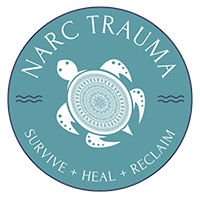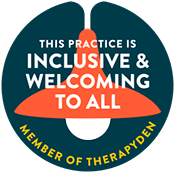Healing from Coercive Control Trauma

By Brenda Stephens, Licensed Professional Clinical Counselor
Healing from coercive control trauma can be a complex journey, but there are effective methods that can aid in recovery. This blog explores eight proven techniques to empower survivors and help them reclaim their lives. From therapy options to self-care practices, these strategies are designed to promote healing and resilience.
1. Understanding Coercive Control
To begin the healing process, it is essential to understand the nature of coercive control and its impact on mental health.
Coercive control is a form of psychological and emotional manipulation that can leave deep marks on an individual’s psyche. It often involves tactics designed to undermine self-worth and foster dependency on the abuser. Recognizing these tactics is the first step towards recovery. Many survivors may struggle with feelings of shame or guilt as they come to terms with their experiences, but it’s crucial to acknowledge that these feelings are a natural response to trauma.
Understanding the signs of coercive control can empower survivors to identify their experiences clearly. This awareness can lead to validation and ultimately, healing. The road ahead may be daunting, but education about this form of abuse can help survivors reclaim their narrative.
2. Seeking Professional Help
Engaging with therapy can provide valuable insights and coping strategies for dealing with traumatic experiences.
A qualified therapist can help survivors navigate the tumultuous feelings that arise from coercive control. Therapy options include cognitive behavioral therapy, which focuses on changing negative thought patterns, or EMDR, designed to alleviate distress related to trauma. Choosing the right professional can be pivotal; therefore, take the time to find someone who specializes in trauma and understands the nuances of coercive control.
Moreover, therapy can offer a safe space for survivors to express their thoughts and feelings without judgment. By working through emotions with a trusted professional, individuals can learn how to disconnect from previous patterns of control and begin to forge healthier mindsets.
3. Building a Support Network
Surrounding yourself with understanding friends and family can create a safe space for healing.
Your support network plays a crucial role in your recovery. Allies – whether friends, family, or support groups – can validate your experiences and help you feel less isolated. Reaching out and sharing your story with others who understand the complexity of coercive control can be incredibly healing. Additionally, these connections remind survivors that they are not alone in their journey.
Consider joining community groups or online forums where survivors gather to share their experiences. These platforms can offer emotional support, practical advice, and a sense of belonging, fostering resilience as individuals navigate their recovery.
4. Practicing Mindfulness Techniques
Mindfulness practices such as meditation can help in reducing anxiety and grounding oneself in the present moment.
Integrating mindfulness techniques into daily routines can vastly improve emotional stability. Breathing exercises, body scans, and meditation not only alleviate stress but also promote a greater sense of self-awareness. These techniques facilitate grounding, enabling survivors to remain anchored in the present rather than becoming overwhelmed by past traumas.
Mindfulness fosters a compassionate awareness of one’s thoughts, emotions, and physical sensations. This practice empowers individuals to observe their inner dialogue without judgment, slowly transforming negative patterns into healthier ones. With time and practice, mindfulness can become a powerful tool in a survivor’s toolkit for healing.
5. Engaging in Creative Expression
Art, writing, or music can be powerful outlets for expressing emotions and processing trauma.
Creative expression offers a unique avenue for exploration and transformation. Engaging in artistic activities can allow survivors to convey feelings that may be too challenging to articulate verbally. For some, painting, drawing, or sculpture can become a cathartic release, helping to externalize deeply held emotions. Others may benefit from journaling, where they can safely document their journey and reflect on their experiences.
Music also serves as a therapeutic medium. Whether composing, playing an instrument, or simply listening to tunes that resonate with their feelings, survivors can find solace in sound. Creative expression not only fosters self-discovery but can also serve as a powerful reminder of one’s resilience and capacity for healing.
6. Establishing Healthy Boundaries
Learning to set boundaries is crucial in rebuilding self-esteem and reclaiming personal agency.
Establishing boundaries post-experience of coercive control involves a deep understanding of personal limits and needs. It’s important to recognize the difference between healthy boundaries and walls of isolation. Healthy boundaries facilitate mutual respect, allowing individuals to communicate their needs effectively. Reclaiming this aspect of self-worth can empower survivors to create relationships that value their autonomy, providing a protective framework against future manipulation.
Practicing boundary setting can be challenging, particularly for those who have experienced coercive control. However, doing so consistently nurtures self-advocacy and confidence. Individual empowerment arises from actively choosing how one interacts with the world, embodying a foundational principle of healing.
7. Prioritizing Self-Care
Engaging in self-care routines can enhance emotional regulation and promote overall well-being.
Self-care is not merely a trend; it is a crucial component of the healing process that demands attention and intention. Simple acts such as nurturing physical health through exercise, maintaining a balanced diet, or prioritizing restful sleep can significantly impact emotional well-being. Additionally, taking time for hobbies or activities that bring joy serves as a vital reminder of one’s identity outside of trauma.
Remember, self-care also encompasses emotional and mental nourishment. Activities such as reading, taking nature walks, or even engaging in relaxation techniques can help cultivate a sense of peace. By actively investing in self-care, survivors can restore a sense of agency and control over both their bodies and emotions.
8. Educating Yourself about Trauma Recovery
Understanding the recovery process can demystify the journey and provide a sense of direction.
Knowledge is a powerful tool in the healing process. By learning about coercive control and trauma recovery, survivors can find clarity amidst confusion. Understanding the psychological aftermath of coercive control equips individuals with the knowledge to separate their identity from their experiences. This education fosters resilience, allowing survivors to feel empowered in their journey.
Consider seeking literature, podcasts, or seminars focused on trauma recovery. Engaging with these resources can provide invaluable insights into coping mechanisms and strategies that can aid in the healing process. With the right knowledge, survivors can navigate their path with confidence, transforming their narratives into stories of empowerment and renewal.







